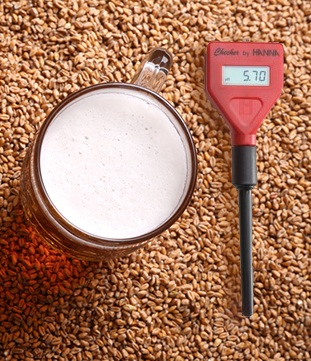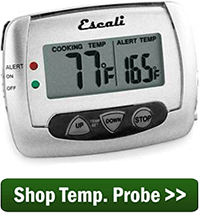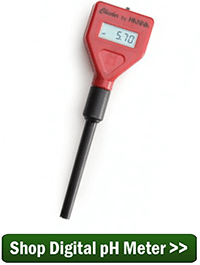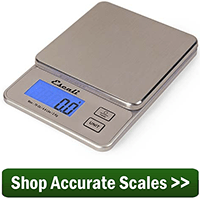 Measuring pH is an important part of all-grain brewing for a number of reasons. pH influences starch conversion during the mash, the quality of fermentation, resistance to infection, and flavor. While it’s possible to make good beer without paying any attention to pH, being able to measure the acidity or alkalinity at different points in the brewing process gives you one more tool in your homebrewing toolbox to gain full control over the end result – the beer!
Measuring pH is an important part of all-grain brewing for a number of reasons. pH influences starch conversion during the mash, the quality of fermentation, resistance to infection, and flavor. While it’s possible to make good beer without paying any attention to pH, being able to measure the acidity or alkalinity at different points in the brewing process gives you one more tool in your homebrewing toolbox to gain full control over the end result – the beer!
With that in mind here is some basic information on calibrating a pH meter for brewing beer. Some first-time pH meter owners are a bit intimidated by the process, but as you will see, there is not all that much to it.
Is measuring pH just for all-grain brewers?
pH is most relevant when mashing, or mixing crushed malt with water. The enzymes that convert the complex sugars found in malt into fermentable sugar work best within a certain pH range (5.2-5.5). While it may be helpful for extract brewers to measure the pH of their wort or finished beer, it’s usually not a priority.
Calibrating a pH Meter for Brewing
To calibrate your digital pH meter, you will need:
- your pH meter
- 500mL distilled water
- one or two beakers or glass jars (depending on how many buffer solutions you have)

- pH buffer solution
- a thermometer
*Note: pH meters and testing procedures may vary. Follow the instructions that came with your pH meter.
To calibrate your digital pH meter:
- Prepare buffer solution: If using a buffer powder, mix 250 mL water with buffer powder, and fully dissolve buffer powder in water. If using a solution, pour buffer solution into testing jar.
- Turn on pH meter.
- Submerge the electrode end of the pH meter into the buffer solution.
- Wait until reading stabilizes.
- Adjust pH meter as needed. Most entry-level pH meters can be calibrated with a small screwdriver. Turn the small screw on the pH meter until the reading matches the pH of the buffer solution.

- If using a second buffer solution, rinse the electrode on the pH meter with distilled water and repeat the steps above for the second solution.
pH Meter FAQs:
- What is pH? pH stands for potential hydrogen and it measures the acidity or alkalinity of a liquid on a scale of 0-14. A pH of 7.0 is neutral. Measurements below 7.0 are acidic; above 7.0 are alkaline.
- How often should I calibrate my pH meter for brewing? pH meters should not need to be calibrated for every brew, but will fall out of calibration over time. Calibrate before the first time you use it, and again every 3-6 months. When you recalibrate, make a note of the date and how far off the reading was. This will help you determine how often to recalibrate your particular pH meter when brewing.
- Do I need to make adjustments for temperature?
 Some pH meters come with automatic temperature control (ATC), in which case you do not need to adjust for temperature. However, you will still need to make sure you’re using the meter within its operating temperature range. Check the manual before using the pH meter in very hot wort.
Some pH meters come with automatic temperature control (ATC), in which case you do not need to adjust for temperature. However, you will still need to make sure you’re using the meter within its operating temperature range. Check the manual before using the pH meter in very hot wort.
Do you use a pH meter in your home brewery? How often do you calibrate your pH meter for brewing?
—–
David Ackley is a beer writer, brewer, and self-described “craft beer crusader.” He holds a General Certificate in Brewing from the Institute of Brewing and Distilling and is founder and editor of the Local Beer Blog.

That was useful ! Thanks !
I got a very tiny trace amount of ph 7.0 buffering solution in my 5 gallons of beer water .. l just residue Left on the meter electrodes .. does that matter ? Too small an amount to contaminate ?
Thanks for your good website and information !